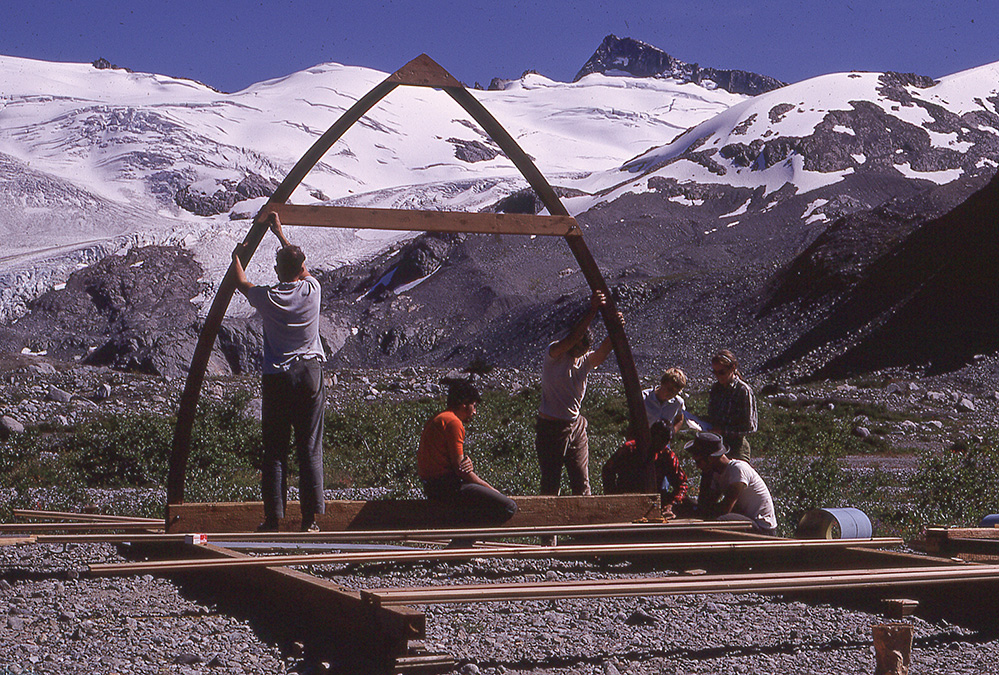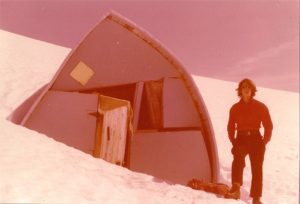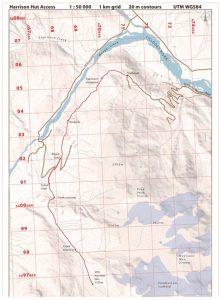10 – Site Selection

Construction begins on the Sphinx (Burton) Hut after the UBC-VOC Club decided to build their own Gothic Arch Hut in the summer of 1969.
After the design of a hut is selected, the next important phase of the building process is finding a suitable location for the hut. Since the potential worksites are in remote locations, several factors needed to be considered prior to building the hut. The process generally involves receiving input from club members on the site or locations of interest to further mountaineering or ski touring pursuits. Usually, several potential sites are selected, and the next step is to find access to these locations. The potential sites are plotted out on topographical maps and members would then scout these sites for potential hazards, as well as access to fresh water, points of interest, and general accessibility.
With site selection, trail or route accessibility is just as important as the physical site itself. In many cases, the hut locations selected necessitate the labour-intensive task of building trail access. In the best-case scenario, there are existing logging or forest roads that can be used to facilitate access to the hut.
As a rule, the site selected by a club had to be within one day’s travel from the Lower Mainland.
The process of selecting a site also involved determining the status of the land: was the site located in a Provincial Park, park reserve, or a First Nations heritage site, or was the land status tied up in natural resource extraction such as mining or forestry? Any of these factors could slow the process of being granted land status to build the hut.
The UBC-VOC has had bad luck at a couple of locations with snow-creep and snow accumulation. The Garibaldi Neve Hut, for example, survived only two years before the hut was destroyed by snow.

The Névé Hilton Hut getting crushed by snow creep, John Spouge in foreground, July 1975. VOC Archives. Photo by Berni Claus.
Likewise, the Brew Hut saga, which is well documented in the club’s journal, tells the story of the hut building, relocation, rebuilding, dismantling, and finally the building of a new hut in a different style and location on Mount Brew.
For the most recent hut built at Watersprite Lake, land status was granted in 2009 but the site selection and reconnaissance took many years. Construction was finally completed in the winter of 2016.


